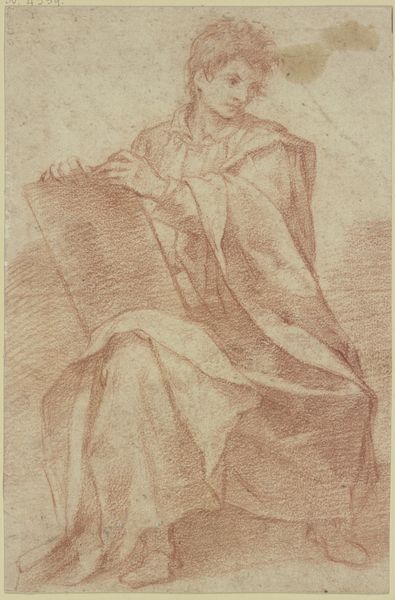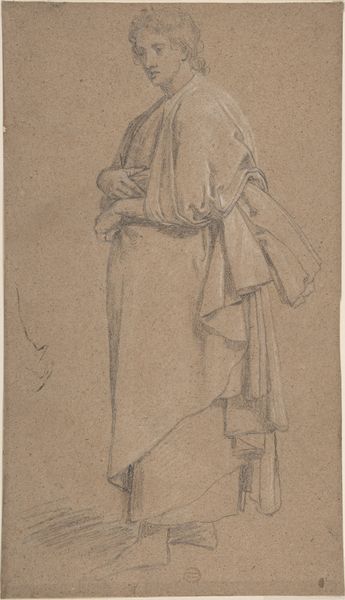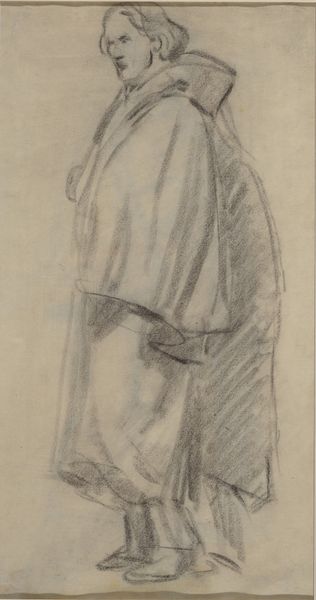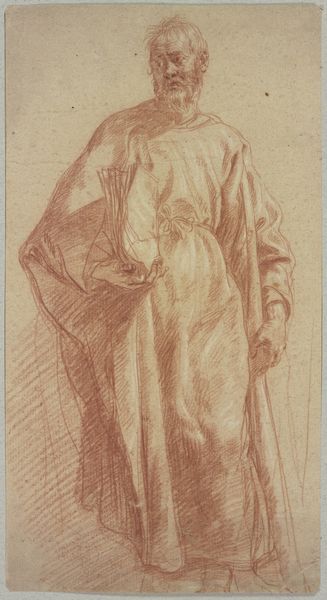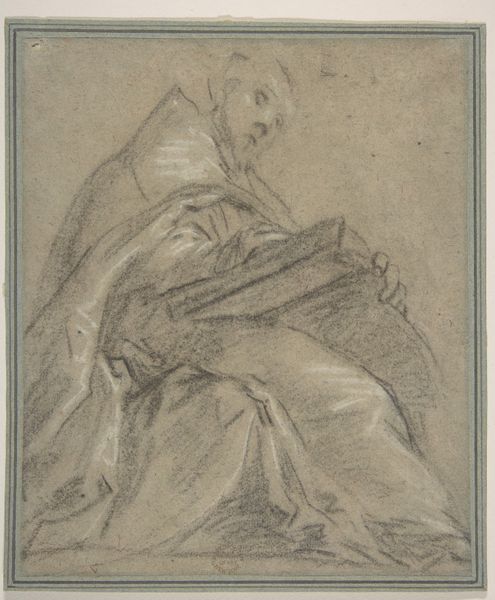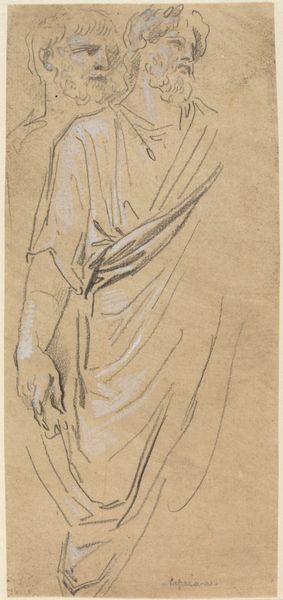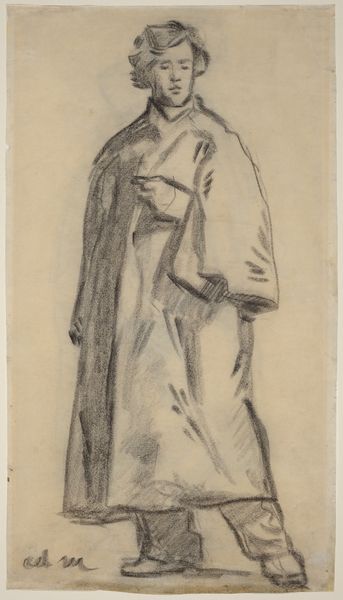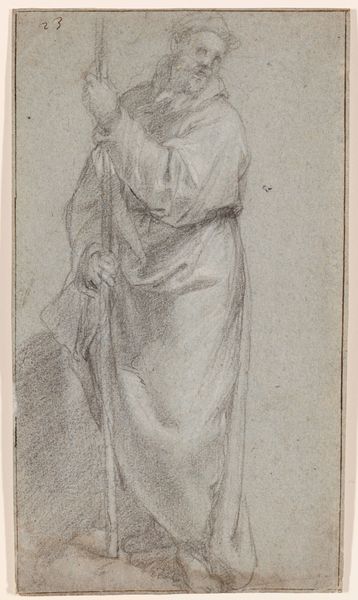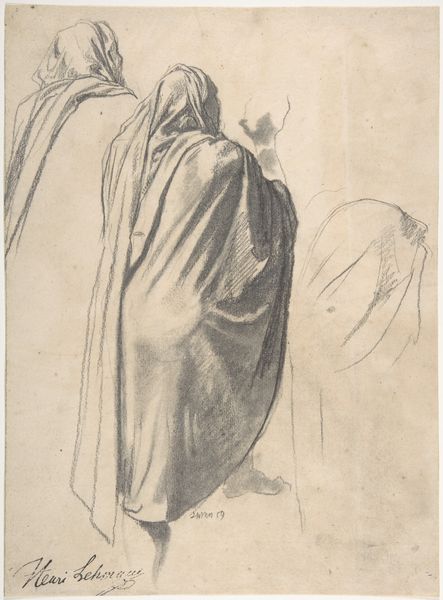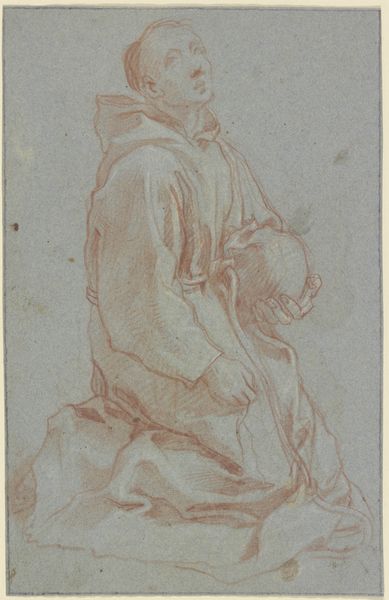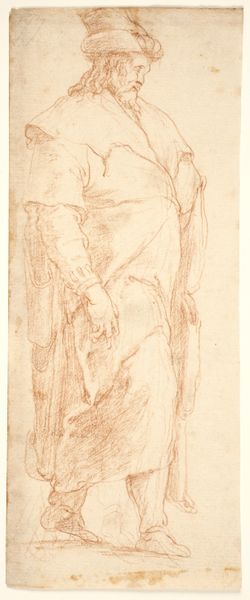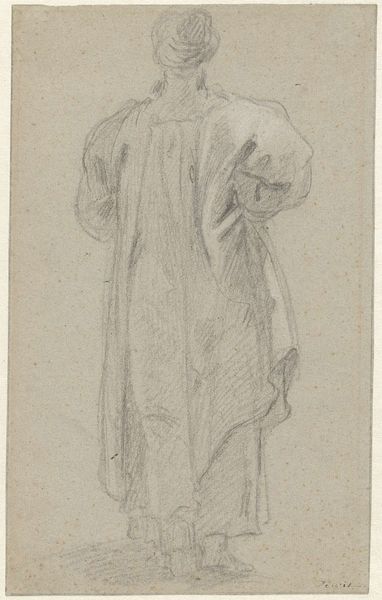
Saint Bartholomew (recto); Study of Drapery and Two Hands (verso) 1569 - 1632
0:00
0:00
drawing, pencil
#
portrait
#
drawing
#
figuration
#
pencil drawing
#
pencil
#
italian-renaissance
Dimensions: 15 3/4 x 10 9/16in. (40 x 26.8cm)
Copyright: Public Domain
Curator: Here we have a drawing entitled “Saint Bartholomew (recto); Study of Drapery and Two Hands (verso),” attributed to Carlo Bononi, an Italian artist whose active period stretched from 1569 to 1632. It's a pencil drawing, currently held in the collection of the Metropolitan Museum of Art. Editor: My first thought? Vulnerability. There's a starkness to the piece; the soft pencil work adds to that raw, almost unfinished quality. He’s exposed. Curator: The figure's gaze, lifted towards the heavens, lends a quiet dignity to that rawness, doesn't it? Bartholomew, of course, is typically represented with the instrument of his martyrdom – flayed alive – so here the symbolism feels very muted. There's a contemplation of faith rather than a display of suffering. Editor: Interesting point. Seeing him like this challenges the more gruesome depictions. The folds of fabric seem to almost weigh him down, confining him even in what should be a moment of transcendence. Is Bononi making a statement about the Church's influence at the time? Curator: Perhaps not directly a statement, but definitely a reflection of the era's spiritual anxieties. It’s part of a larger pictorial tradition—it echoes the Renaissance fascination with classical ideals. Consider, in that light, how Bononi uses drapery—notice the influence of Roman sculpture, where the arrangement and density create dynamism and emotion. That was a sign of nobility in Renaissance culture. Editor: So, the drapery, a symbol of stature, is paradoxically contributing to this feeling of unease, rather than the comfort you'd imagine? It seems we’re presented with a saint grappling with an inner world, something much more subtle and complex than simple piety. Curator: Absolutely. This work reminds us that sacred figures, even in the eyes of artists in the Italian Renaissance, are still profoundly human, bearing witness to the struggles of faith. Editor: I agree completely, what a powerful thing it is when cultural symbols manage to communicate what feels raw and authentic to our modern-day experience.
Comments
No comments
Be the first to comment and join the conversation on the ultimate creative platform.
